Here’s an informal test of the Nikon 500 mm f/5.6 phase Fresnel lens on a Nikon Z7.
Here’s the scene, with the blooming bay tree target about 30 meters away:

Note the minimal illumination falloff.
Making three shots for each variation and picking the sharpest, I exposed at base ISO 100 for both cameras. I used AF-S and the medium spot, focusing on the target grove of trees 47 meters from the camera.
Capture conditions were:
- Heaviest RRS legs
- Arca Swiss C1
- 5 second self-timer
- Electronic shutter
Images developed in Lightroom, with default settings except:
- WB set to daylight
- Exposure to equalize brightness
- Adobe Color Profile
- Sharpening 20, radius 1, detail 0
- Chromatic aberration correction turned off
- Pick the best of three images at each test condition
I did not try to defeat Lightroom’s silent distortion correction.
We’ll look at some tight crops.
If you’ve seen these here before, just jump to the images. If not, I need to spend some time telling you how to interpret them. They’re at roughly 250% magnification, enlarged to 700 pixels high on export from Lightroom. If you just want a rough idea of the differences, just look at the images as displayed in-line in the posts. However, if you wish to compare these images in detail, you should view these images by clicking on them to see the source files, then set your browser for 100% zooming. Even better, download them and make Photoshop stacks.
No matter what you do, these crops are all going to look horrible. I’m blowing them up so much so that they will represent the original file after JPEG’s discrete cosine transform has had its way with them. If you want to get a good idea of what the images would look like printed, get far away from your monitor. No, farther than that. Put a bunch of the images up on the screen and back up until the best one starts to look good. Then look at the others. There’s another reason why these images won’t look like the best thing the camera/lens combination can deliver. They’re demosaiced with Lightroom. Lightroom is not awful, but for a particular image, there are usually better raw processors. I use Lr because it’s a de facto standard, because I know it well, and because it’s got good tools for dealing with groups of images.
Here’s how to use these highly-magnified crops. The dimensions of the Z7 sensor is 9504×6336 pixels. If we make a full-frame print from the Z7 on a printer with 360 pixels per inch native driver-level resolution, like the Epson inkjet printers, we’ll end up with a 26.4×17.6 inch print. The 289×224 pixel crop you’re looking at will end up 0.8×0.68 inches. Let’s imagine that you or your viewers are critical, and will look at the 27×18 inch print from about 18 inches (conventional wisdom is that the distance would be a little greater than that, or 28 inches (the diagonal), but you did buy a high-resolution camera for a reason, didn’t you?).
The next step is dependent on your monitor pitch, which you may or may not know. Turns out, you don’t have to know it. Just take the 250% crops and view then at 1:1. How high are they? Get out your ruler and measure, or just guess. Let’s say they are 6 inches high. 6 inches is about 7 times 0.8, so in order to view the crops the way they’d look from 18 inches on the print is to view them from 7 times as far away, or 10.5 feet.
Everything here scales proportionately. If the image on your screen is bigger than 6 inches, increase your viewing distance by the ratio of your image height to 6 inches. If you think your viewers are going to almost get their nose to that print and look at it from six inches, divide that 10.5 feet by 3, and look at the image on the monitor from three and a half feet away

There are no single-pixel-wide branches here. The narrowest ones are about one and a half or two pixels. The image is quite sharp, but it’s hard to tell how sharp because of the lack of high-spatial-frequency detail.
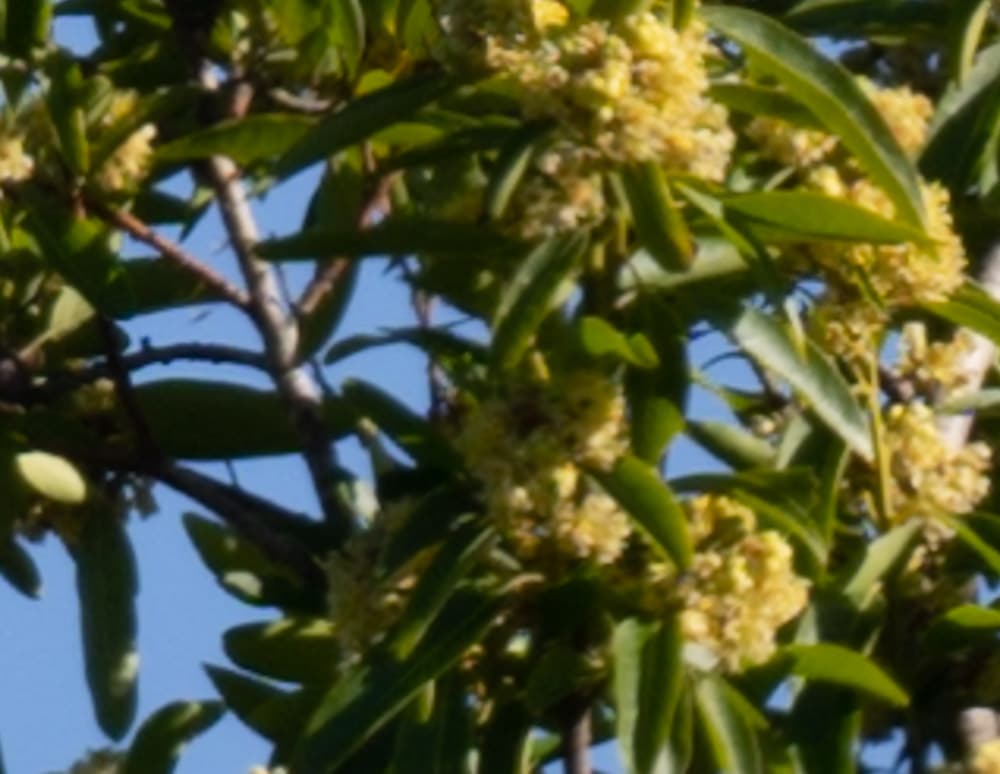
Maybe f/8 is a little sharper. maybe it’s not.
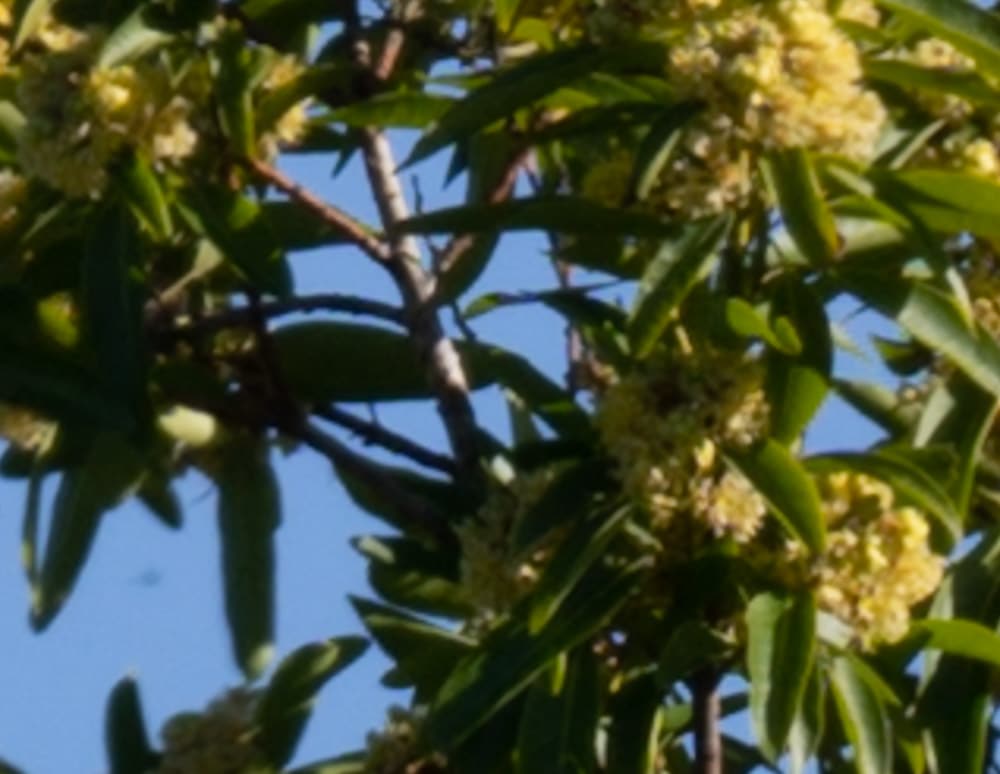
I’m saying that this one’s a little softer, but it’s hard to tell with this target.
In the upper right corner:
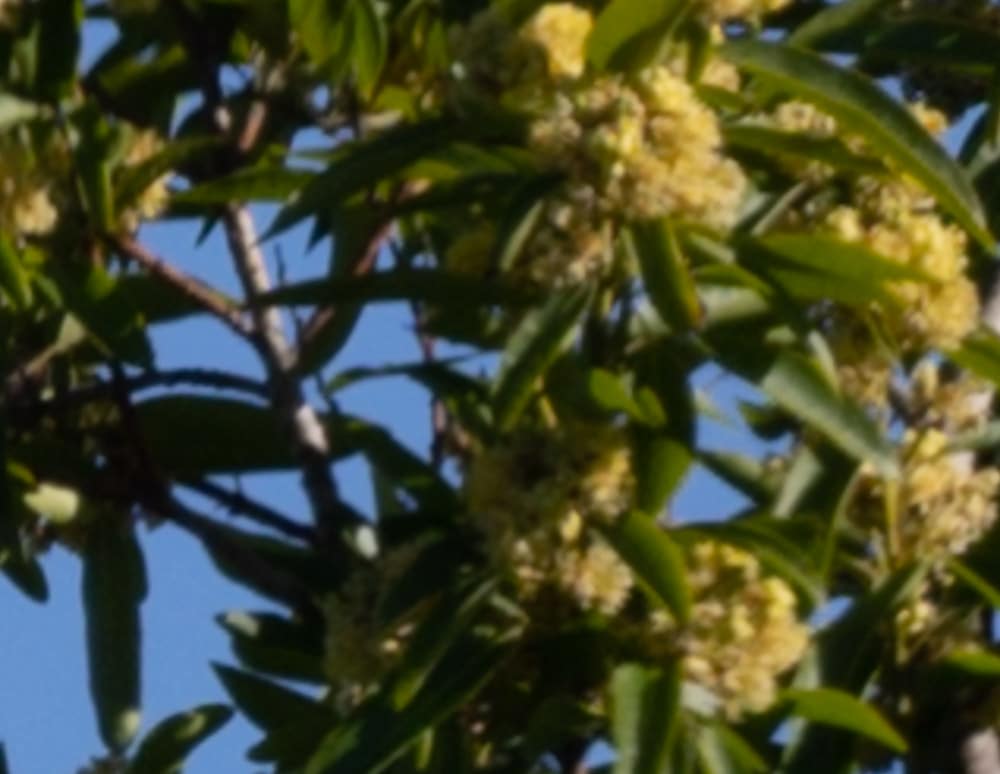
The corner is not quite as sharp as the center.
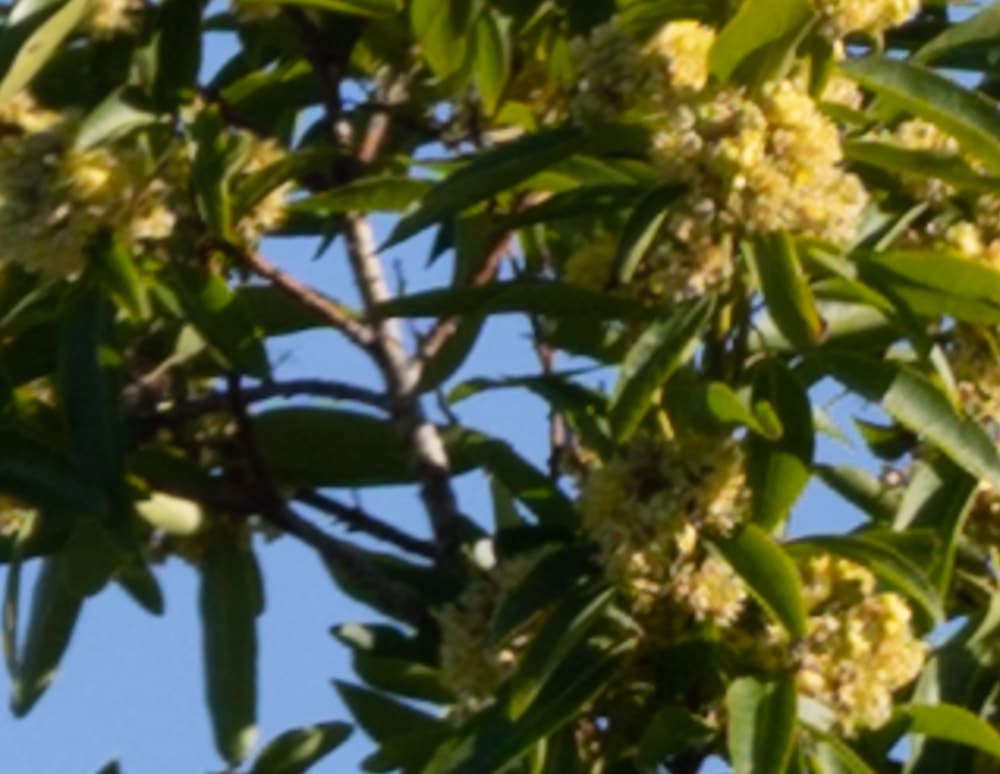
Stopping down definitely helps the corner.

Softening up just a hair at f/11.
More to come.
By the way, here’s the wide-open center shot with the Lightroom default sharpening of amount 48, radius 2, detail 25:
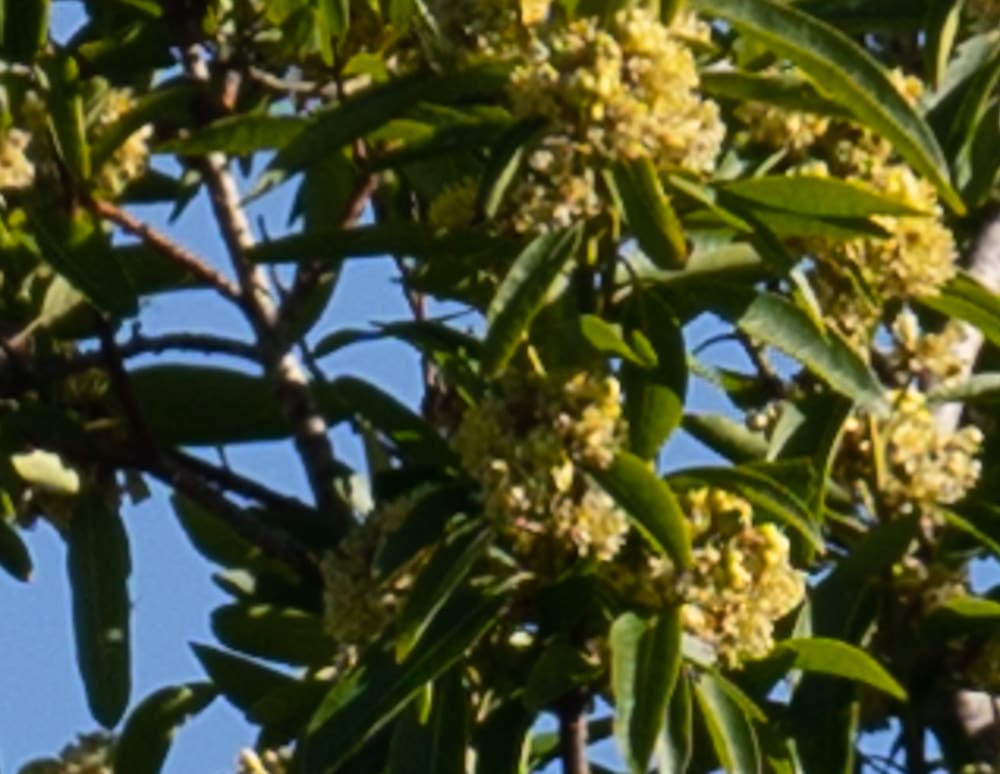
There’s a little haloing. Backing the detail down to zero fixes that:

You should offer the RAW photos for download. This is the only way to form one’s own opinion on this lens.
I don’t post raws. Here’s why:
https://blog.kasson.com/the-last-word/why-i-dont-post-raws/
Thank you for the answer. Too bad, then I can now only delete the bookmark for this blog…
Goodbye. Not sure why you bookmarked my blog if what you want is raws. Good luck with your search for them.
Excellent and interesting article, I’m not professional photographer but a happy snapper that’s used Canon and nikon a long timeand need update. The results here give good bias as to how the sensor and lens perform and for a snapper is more than adequate – much aopreciated
John